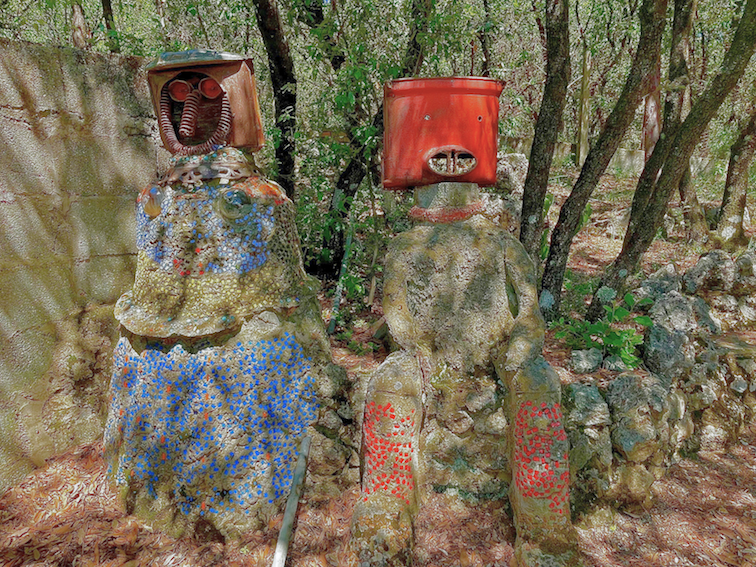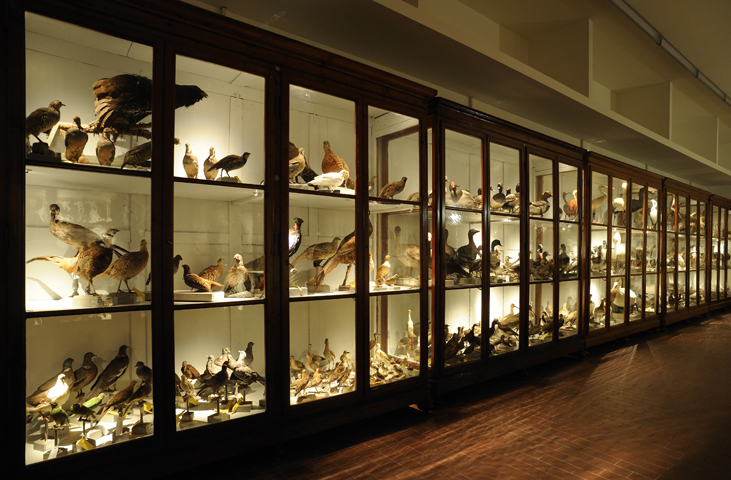Fuseum
An extraordinary complex of artworks created by the Perugian Brajo Fuso is located on Montemalbe hill in Strada dei Cappuccini, Perugia.
Sculptures and installations made from a wide variety of materials, textural paintings, ceramics, and fantastical tales allow visitors to enter a unique artistic experience of nearly four decades of experimentation.
An artistic reading of a troubled world
A great inquirer and discoverer, Brajo Fuso was born in Perugia on 21 February 1889, a month (febbraio in Italian) that inspired his mother in the choice of his unusual name. In 1923 he graduated in medicine and opened a dental practice in Perugia. He pursued his profession in an exalted manner with all the scientific and human commitment that this kind of work demands, so much so that he had numerous patents to his name, such as the combined dental drill unit and chair, installed for the first time in the world in his clinic. His personality, in constant motion, did not in any way deprive him of living life fully even in a creative and imaginative way.
His wife, the Bolognese academic painter Elisabetta Rampielli, known as Bettina, would be fundamental to his artistic training. After his last obligatory and painful mission in the war in 1940 stimulated the artist to paint, his artistic adventure began. From colours on canvas, he came to collect and manipulate the most disparate objects and materials such as sheet metal, iron, aluminium, glass, ceramics, plastic and textiles, giving them a new aesthetic image. He desired to represent the troubled historical events of his time, from 1945 to 1980, demonstrating the ability to react creatively to the environment in which one lives, the ability to live positively.
His spontaneous and unconscious works, exhibited throughout Italy, would coincide with the techniques of the greatest international masters, such as Jackson Pollock, but the artist’s choice was always to remain and cultivate his art in his Perugian refuge, creating an exhibition space, a fundamental place of creation, open to the public: “In 1961, on the hill of Montemalbe, five kilometers from Perugia, among the green of the holm oaks, I created the Fuseum, my personal gallery, the wooded park dotted with sculptures. (...) I am very attached to my paintings and I am very happy when I feel them close to me. I wanted to give them a home, like children.’’
Having no heirs, he decided to entrust it after his death in 1980 to the Fondazione di San Martino to preserve it and make it a place of openness for artistic experimentation.
























.jpg/7c1a2dc4-3986-52b2-a853-2affab4017e0?width=1920)

.jpg/53c7c378-8c12-cbd6-481e-7946513a6453?width=780)
.jpeg/8031dd9b-06c7-4ac1-a77b-86e1376416b6?width=780)



.jpg/57eda7af-f14d-d05d-f11c-d1cdb56c5f9f?width=780)
.jpeg/0d7d918e-eddd-ed4c-9da2-23a6917261f0?width=780)
